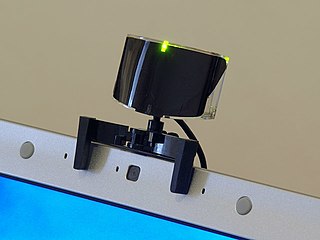This article has multiple issues. Please help improve it or discuss these issues on the talk page . (Learn how and when to remove these messages)
|
| | |
 TrackIR 4:PRO camera attached to laptop monitor | |
| Manufacturer | NaturalPoint Inc. |
|---|---|
| Type | Video game controller |
| Release date | 2001 |
| Connectivity | USB |
| Website | www |
TrackIR, created by NaturalPoint Inc., is an optical motion tracking controller for Microsoft Windows.
Contents
- History
- TrackIR interface with games
- Criticisms
- TrackIR 4 Pro
- TrackClip PRO
- See also
- References
- External links
It tracks head motions with up to six degrees of freedom (6DOF) which allows for handsfree view control. Head position and orientation are measured by a purpose-built video camera, mounted on top of the user's monitor, that observes infrared (IR) light reflected or emitted by markers on a rigid model worn by the user.
The camera and tracking sensitivity adjustments are controlled by TrackIR, head movements can be scaled while the user is still looking at the monitor allowing a virtual movement of 180 degrees to occur.